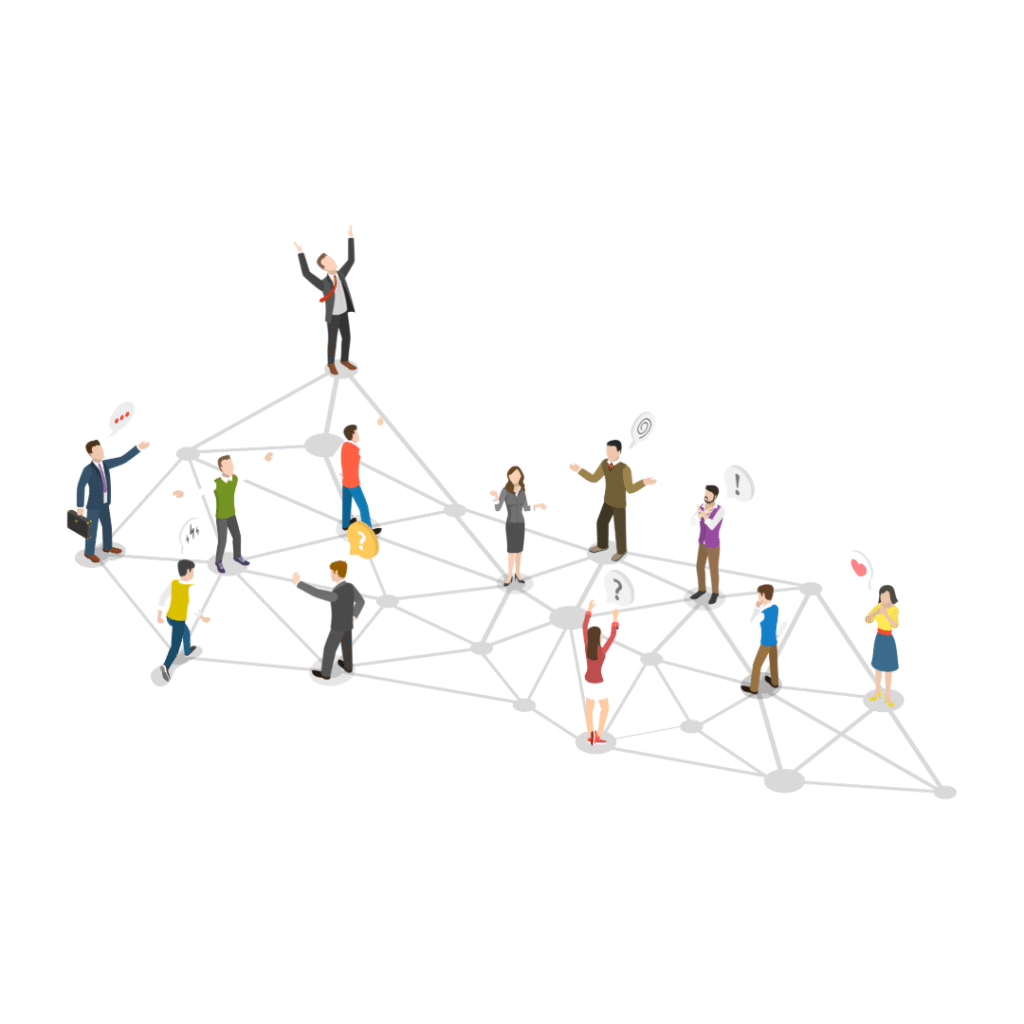Surveillance and Play in the Classroom
by Mâir Bull and Eileen Pollard
Mâir Bull and Eileen Pollard are Academic Developers in the University Teaching Academy. Mâir leads the University’s distributed leadership model for inspiring change, the Innovation Scholar Scheme, and Eileen leads two Executive Leadership courses plus the Masters in HE programme.
‘Surveillance is permanent in its effects, even if it is discontinuous in its action’ (Foucault, 1975): Surveillance and Play in the Classroom

Space is neither innocent nor neutral: it is an instrument of the political; it has a performative aspect for whoever inhabits it; it works on its occupants. At the micro level, space prohibits, decides what may occur, lays down the law, implies a certain order, commands and locates bodies.
(Pouler, cited in Jamieson, 2023 p.121)
Ingress and Egress: Exit through the Classroom1
At the start of many classes now students tap their student card on a monitoring device embedded in the wall, as if starting a journey on the tube. What is the effect on education when mechanisms for surveillance are built into the classroom itself? Can it genuinely remain a space for possibility as bell hooks so famously described it? Or is it compromised? Is there perhaps, ingress? When something, possibly undetected, enters and effects change?
And educational spaces are far from neutral to begin with. For a start, universities are institutions, some ‘total institutions’, which were identified by sociologist Erving Goffman as institutions where all aspects of life, from waking to sleeping, are enacted in a single space. Other examples of total institutions include hospitals and prisons. But surely universities have nothing in common with prisons? Well, Jeremy Bentham’s conception of the perfect prison was a ‘panopticon’ tower built in the centre to observe every prisoner in their cell, or, more cleverly, to create the optic of possible observation at any/all times. And maybe there is a trace of this never-knowing-when you are being watched or observed on university campuses too?
Plus, even if students are discontinuously surveilled, the effects are still permanent, as Michel Foucault argued. There is the ongoing possibility and potential of being monitored, synchronously and asynchronously, and these are technologies of control, which have the effect of, well, controlling people. OK, but then, how is visibility also a trap, as Foucault further argues in Discipline and Punish (1975)? And a trap for whom? The surveiller or the surveilled? One way it is a trap for both is that once we synonymise education with visibility, we trap ourselves in an endless cycle of tracking, monitoring, measuring and essentially chasing visibility – as proof that Education, capital ‘e’, is somehow taking place. Then we cannot backtrack from visibility as education’s proxy. But, simultaneously, while universities cannot conceptually ‘backtrack’, some students literally backtrack out of the classroom by tapping in and then leaving (egress, the action of exiting). Is that maybe a reaction to control or what happens when you reduce learning down to a data point of presenteeism? To some students perhaps it becomes more important to be seen to be there, from a data point of view, than actually being there? Moreover, what effect does this entrance and immediate exit have, permanent or temporary? Or rather effects, plural: on the student, on other students, on the lecturer? The nostalgic ideal remains that our higher education learners are autonomous, independent adults, but is that what the behaviour of tapping instils? On a telescreen-like monitoring device in the wall? Reimagine the Banksy CCTV camera above as an oyster-card-like reader, maybe shaped like a large eye, in the wall of a classroom and a student sat at a desk asking it: what are you looking at? Ultimately, we do not need to know whether or not the student is physically present, we need to know whether or not they are psychologically, cognitively, intellectually, even, dare I say it, spiritually so.
Instead, this infrastructure positions students as merely performing a zombie-like tick-boxing, rather than what we all hope they are gaining educationally, a commitment to life-long learning. Tapping the card is an empty transaction, a passive-aggressive gesture, an exchange of code that ends up standing in for learning for many. Can requiring they tap-in ever be empowering? Well, that depends on what is it for – but to check, to prove, to monitor, to surveil, that they are where they are supposed to be will always carry a punitive edge.
‘I woz here’: surely the learning is better proof of that?
Play and Playfulness as an Antidote
University spaces should be designed to evoke feelings of safety, belonging and inspiration – offering varied experiences that should shape, and be shaped by, the relational priorities of learning and teaching (Ceppi and Zini, 1998; Jamieson, 2003). Additionally, the design of university spaces should encourage experiential approaches, nurturing a culture of playfulness, experimentation and curiosity. This is different from the activities of play as a pedagogical tool (e.g. games, video games, gamification etc), instead we are advocating for ‘playful philosophies and theories [that] can change how universities position themselves in the world, reconnect with their deeper purpose and values, and regain a culture, spirit, and atmosphere (Barnett et al., 2022) that are both playfully serious and seriously playful to all who work and study within’ (Whitton et al., 2024, pp.8).
The level of research on the architectural or interior design of university spaces and playfulness is noticeably lacking. Conversely, there are numerous studies on the playful design of children’s educational spaces (classrooms and playgrounds). Are universities not deemed playful learning and working spaces? Is the research lacking because no one is interested or because the few voices are being ignored? While universities appear absent from much of the discourse on playful spatial design, the corporate world, particularly tech companies, has embraced playfulness as a tool for several decades.

The ‘playful office’ trend is characterised by highly visual decor with bright colours, leisurely settings and non-work artifacts, plus it is promoted as one facet of the broader managerial attempt to integrate play with work, to tap into the creativity, entrepreneurial drive and intrinsic motivation of the employees (Kane, 2004; Alexandersson and Kalonaityte, 2017 pp.297). Google, particularly in the early 2000s, probably springs to mind when thinking about this type of ‘office-as-playground’ design with slides, table-tennis tables, blocks of primary colours and themed zones (as pictured above). However, critics called it gimmicky, superficial and infantilising (Fairs, 2016). This style of design could be coined ‘playwashing’ – the misleading practice of portraying something as more playful than it is in practice (Poulsen, 2016).
Just as the ‘office-as-playground’ phenomena spread to other organisations globally, Google has continued to set the trend. Lee (2023) tracks Google’s office design evolution moving from prioritising play to a focus on sustainability, employee well-being, community integration, and versatility. This highlights a shift in the understanding of play versus playfulness. Staff working in a ship-themed zone, or conducting a meeting whilst playing table-tennis, did not report an increase in innovation, creativity and divergent thinking that designers were perhaps hoping to inspire. Google’s later designs still evoke a sense of innovation and possibility, as pictured below in their Bay View office, but with natural materials and light, a connection to nature, and a carbon neutral build (Real Estate Google, 2025).

Playful practice has also been associated with encouraging criticality, intellectual risk-taking, and challenging norms and assumptions (Whitton et al., 2024). Is it too far to hypothesise that this skillset is not that welcome in the massification of education? You ask any building manager, security colleague or architect if these behaviours are welcome in a building of theirs and the answer is probably no. The business-minded approach of building and managing HE spaces often forgets the bread and butter of a university’s purpose, pedagogy. So how do we strike a balance between the functionality of university spaces that prioritise surveillance and monitoring for safety and attendance, versus the extreme of slides and pirate ships? What should we be prioritising in our buildings to ensure accessibility and inclusion, whilst fostering a culture of playfulness, curiosity and creativity – and thus the confidence, innovation and drive that leads change in our future society?
It is acknowledged that play, as described above, is a western model – although it can be applied inclusively: ‘Pedagogy is never innocent. It is a medium that carries its own message’ (Bruner, 1996 p. 63). What are we afraid of? ‘Play(fulness) is at its core disruptive, unruly, messy, “risky”, uncertain, heterogenous, “inefficient”, and strives for the unexpected (Sicart, 2024; Norgard, 2022). This goes directly against the prevailing culture of the neoliberal university (Norgard & Whitton, 2025 pp.4). Are we afraid therefore of rebellion? The current attendance crisis and ‘presenteeism mindset’ would argue the rebellion is already here. Playful universities instead could be the answer not the problem. Imagine as an alternative, a university that prioritises these values:

Infuse the natural within built environments
Biophilic design promotes sustainability and wellbeing by integrating natural materials and colours with plants into the built environments. Its goal is to foster spaces that evoke calm, connection and belonging.

Celebrate community and diversity
University spaces should reflect the culture, heritage and diversity of its student population, and its wider community and context. Showcasing civic projects and collaborative works in all buildings, not just those in which they were created… art does not only belong in the art school!

Integrating student voice and co-creation
Visual representation should be evident, reflecting students’ co-creation and influence. Facilitate meaningful co-design opportunities for students to shape learning and social spaces, such as cooking facilities, calm zones and community areas. Create opportunities for students to share views on university spaces, history and identity.

Flexible learning spaces
Versatile spaces and teaching approaches foster active, real-world learning and reflective practice. They help shift traditional power dynamics by promoting flexible, social classrooms that support movement, collaboration, and interaction. Engagement not presenteeism.

Fostering a culture of playfulness
Encourage playfulness – spaces that enable experiential and collaborative experiences. Foster a culture of creativity and curiosity, where experimenting and ‘failing safely’ is encouraged.
Universities risk becoming panopticons of attendance data rather than incubators of curiosity and critical thought. Requiring students to tap in and out reduces complex learning journeys to mere transactions—an empty proof of presence that neither guarantees nor captures genuine engagement. To reclaim classrooms as spaces of possibility, we must pair safety and access with playful, experimental, and relational design. Trusting students to co-create flexible environments shifts surveillance to stewardship, and metrics into meaningful learning. This honours bell hooks’ vision of education as freedom and reaffirms the university’s mission: nurturing lifelong learners, innovators, and change-makers.
References:
Alexandersson, A. and Kalonaityte, V. (2018) ‘Playing to dissent: The aesthetics and politics of playful office design’, Organization Studies, 39(2–3), pp. 297–317. Available at: https://doi.org/10.1177/0170840617717545
BBC News (2016) ‘Why the future office will be as much about fun as work’, BBC News, 20 May. Available at: https://www.bbc.co.uk/news/business-36342595
Bruner, J. (1996) The culture of education. Cambridge, MA: Harvard University Press.
Fairs, M. (2016) ‘Google has had a negative effect on office design, says Jeremy Myerson’, Dezeen, 22 March. Available at: https://www.dezeen.com/2016/03/22/google-office-design-negative-effect-interiors-jeremy-myerson/
Foucault, M. (1991) Discipline and punish: The birth of the prison. Translated by A. Sheridan. London: Penguin.
Goffman, E. (1957) ‘On the characteristics of total institutions’, Walter Reed Institute’s Symposium on Preventive and Social Psychiatry.
hooks, b. (1994) Teaching to transgress: Education as the practice of freedom. London: Routledge.
Kane, P. (2004) The play ethic: A manifesto for a different way of living. London: Macmillan.
Lee, J.J. (2023) ‘Unveiling office design evolution: Google’s trend-setting office design transformations’, Medium, 3 January. Available at: https://medium.com/@thefuturedesign/unveiling-office-design-evolution-googles-trend-setting-office-design-transformations-a4dfbe93f69
Poulsen, M. (2016) ‘Playwashing’, Counterplay. Available at: http://www.counterplay.org/playwashing/
Nørgård, R.T. and Whitton, N. (eds) (2025) The playful university: Philosophy, pedagogy, politics and principles. 1st edn. London: Routledge.
Real Estate with Google (2025) ‘Bay View and Gradient Canopy’, Google Real Estate. Available at: https://realestate.withgoogle.com/bayview/


